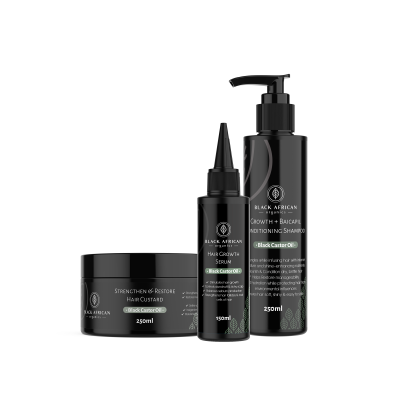5 Things You Need to Know When Starting a New Skin Care Regimen
Opening up a brand-spanking-new bag of beauty goodies feels like a chance to celebrate your birthday whenever you want. From testing the texture, smelling it to see if it tickles your nose to watching your skin transform, there’s a reason why shopping for skin care and makeup is super fun. The only downside to changing your skin regimen is that your face might not always demonstrate the outcome that you’d hoped for. (Especially if you have sensitive, finicky skin, then you know how it feels to try a trendy-sounding moisturizer and suddenly find yourself completely broken out.)
To guide you through your new skin care journey, gathered some research and compiled a list of best tips on what to expect when trying out a new daily skin care routine.
1. There’s a difference between normal skin reaction and allergic reaction.
According to dermatologists, whether your skin is happy with the new product or not, you’re bound to notice a reaction, which can range from mild stinging, burning and itching to red rashes, skin swelling and blisters. It can be an expected irritation reaction—like the mild stinging from an acid toner or the peeling and redness from using a topical cream.
An actual allergic reaction, in contrast, could be painful and long-lived, instead of a mild bout of side effects. If you’re ever concerned, stop using the product immediately and call your dermatologist ASAP. If a product unbearably stings your skin, wash it off. Beauty does not equal pain in this case. You can try the product again in a few days, and see if your skin can tolerate it.
2. Give your skin time to ease into your new regimen.
When you begin to use a new skin care product, we suggest the slow start: begin with a few times a week and monitor how your skin reacts. Sometimes sensitivity is to be expected, as with products containing retinols. But sometimes your skin reacts due to other reasons; environmental, physical or allergic. Pay close attention to how your skin is talking back to you. Check for dry skin, flaking, redness and of course, acne. If your skin becomes dry, red and irritated from a product, and this can be an expected result from certain products like acne creams, Reduce the frequency of use: Start one to three times a week. Give your skin a few days between applications to get used to it.
3. Most active ingredients take at least 2 months to show results.
Patience is key Most skin care products with active ingredients can take about two months to show efficacy. You will have to be patient and consistent in your routine.
4. In some cases, tingling doesn’t mean it’s working.
While we did mention that beauty doesn’t always mean pain, a bit of tingling can actually be a happy indicator that your skin is responding well. However, there is a fine balance, and, generally speaking, skin care and beauty products should not cause irritation and stinging. Irritation in the skin can break down collagen and actually accelerate skin aging. If you notice any reaction, stop using the product, and wait a few days for your skin to calm down before continuing again. If you continue to react, you are experiencing a reaction to the product and should discontinue its’ use. On the other hand, if you experience no reaction, you’re good to continue using the product and can increase the frequency, building up to daily use.
5. Know when to call it quits.
Consider the areas on your face where you’re putting your new skin care products. If any of those spots, from your eyes to your cheeks, start to feel uncomfortable, it’s time to pack up shop and speak with your dermatologist. If you have an allergic reaction, such as eyelid, lip swelling or hives, stop using it. If a product tends to make you sun-sensitive, take a break and stop using it before and during sunny vacations, when you might be more prone to sunburn. If the redness, burning, swelling persists or occurs each time you use a product, stop using it. See a dermatologist to determine if you’re allergic to one of the ingredients. If your adverse skin reaction doesn’t improve a few days after discontinuing the product and you can’t manage it with over-the-counter skin-calming options, see a dermatologist.
After about 6 weeks, you should begin to see the effects, and improvement, in your skin texture and feel.


